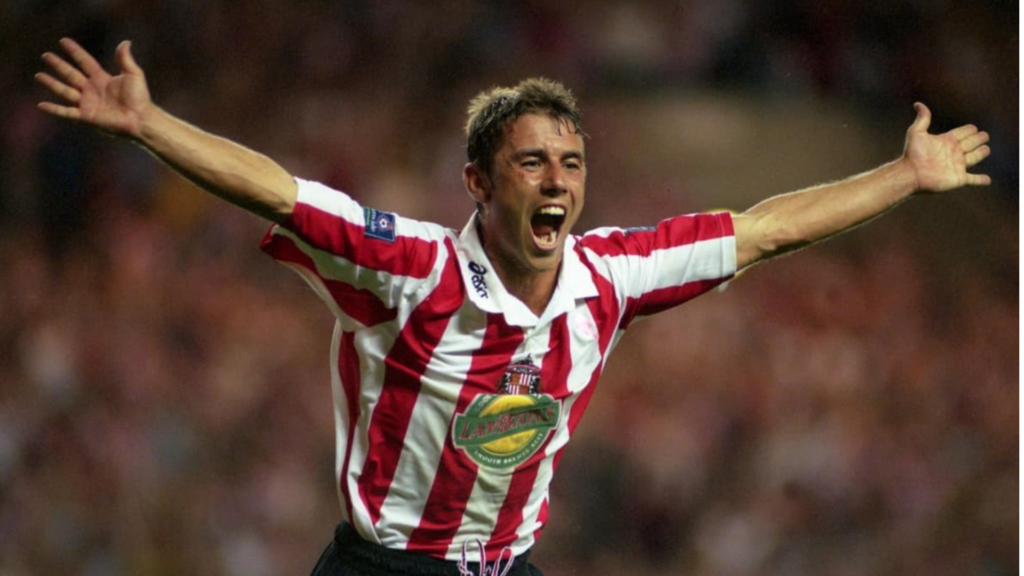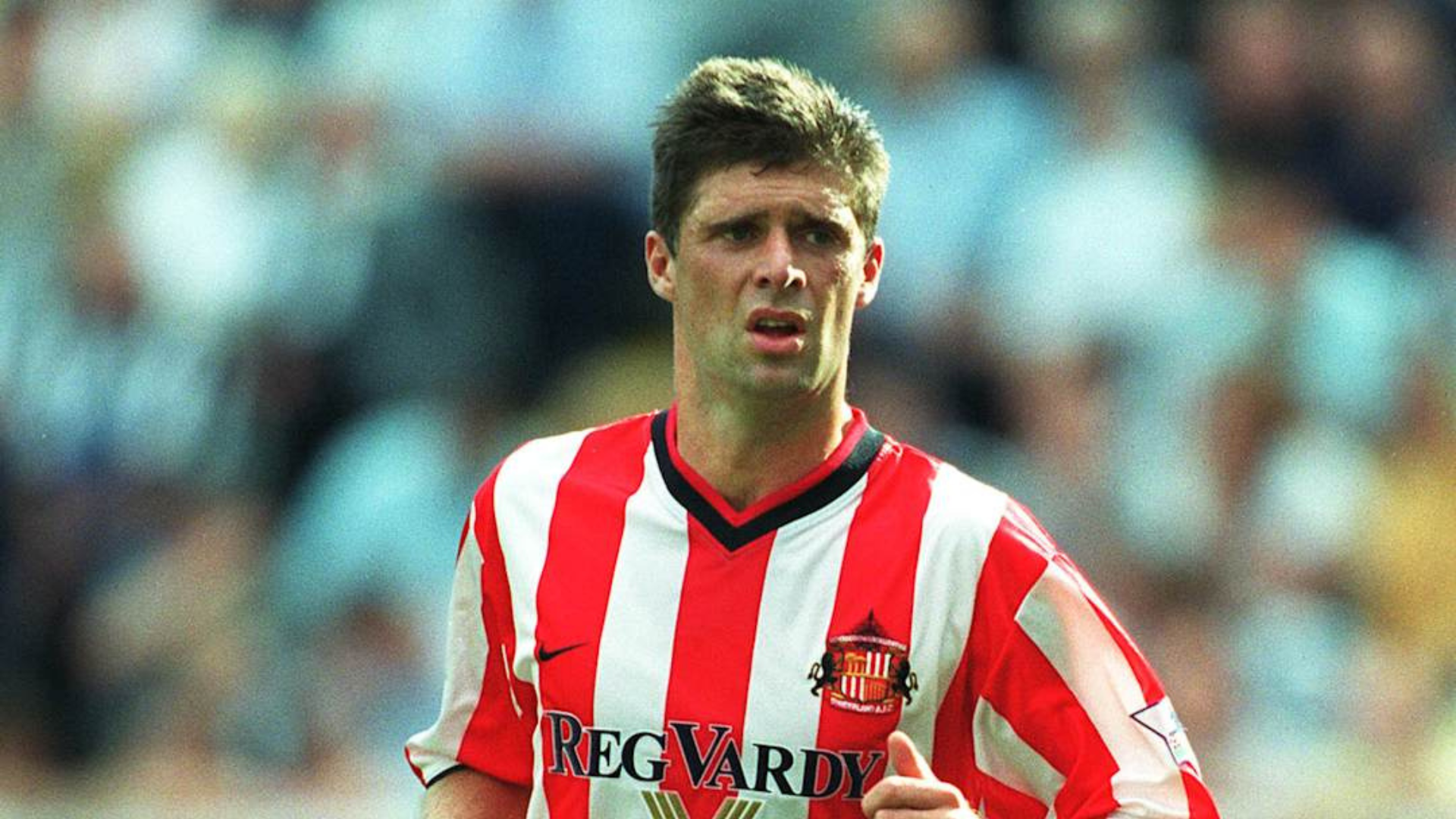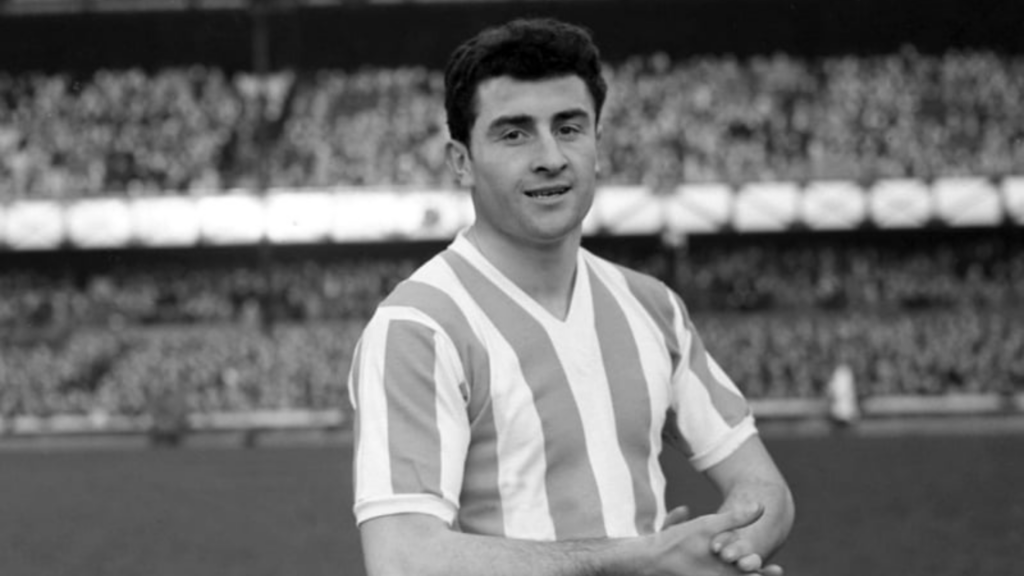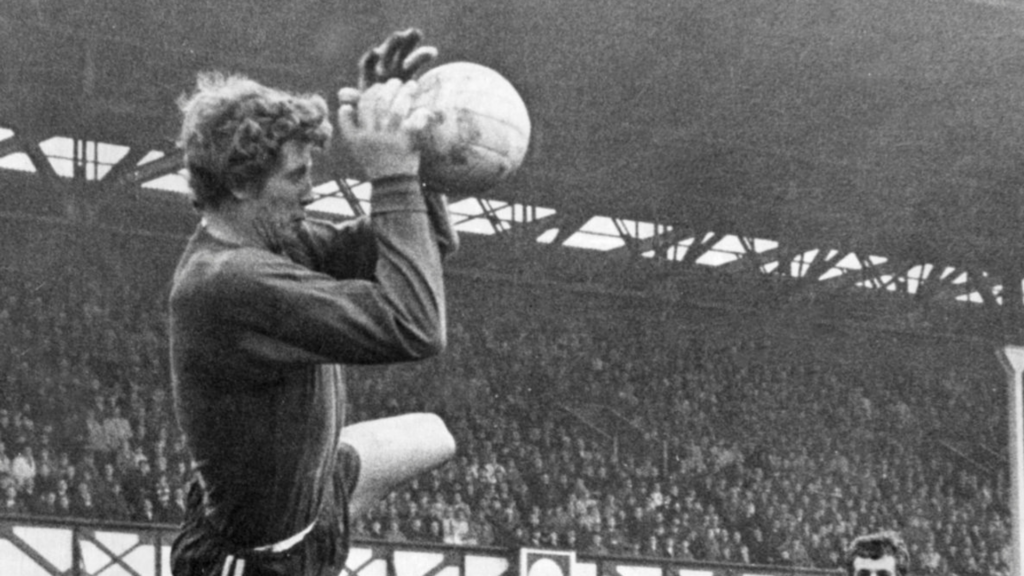Sunderland supporters have enjoyed several legendary figures on Wearside throughout the past few generations.
Whether they have been long-time servants, prolific goalscorers or those who have earned trophies in the famous red and white, they are always welcomed back or remembered fondly by the fans.
Sunderland have had a rollercoaster of a time over the last decade, with an appearance in all three of England’s top divisions, though their prolonged spell in the top-flight saw some remarkable players ply their trade at the Stadium of Light, and some at Roker Park.

Kevin Phillips
- Appearances: 235
- Goals: 130
- Years at Sunderland: 1997-2003
- Trophies: Football League First Division 1999, European Golden Shoe
Kevin Phillips is a name synonymous with Sunderland fans, having arrived as somewhat of an unknown from Watford in 1997. His goal record wasn’t overly convincing.
However, in his first season, the Englishman bagged a remarkable 35 goals, starting off what would prove to be a very successful time at the Stadium of Light.
The season in which Phillips really made a name for himself was the 1999-200 one, where his 30 league goals saw him win the European Golden Shoe, becoming the first ever English player to win the award.
Whenever the striker debate comes up at Sunderland, his name is always mentioned, and that showcases just how much he is remembered on Wearside.

Jermain Defoe and Bradley Lowery
- Appearances: 100
- Goals: 37
- Years at Sunderland: 2015-2017, 2022
Jermain Defoe will go down as one of the best English strikers of the current generation, and certainly one of the best to have ever stepped foot in the Stadium of Light.
Not only was the deal to bring him to Sunderland incredible, but his impact was as well, with his goals single-handedly saving the Black Cats from relegation during his first season at the club.
Of course, it wasn’t only his contributions on the pitch that made him a Sunderland legend, but also what he did off it, and in particular, the incredible relationship he had with young Bradley Lowery, another Wearside legend.
Defoe will be remembered fondly for what he did for the Wearsiders in his first spell at the club, as opposed to his second when he joined a dysfunctional League One side.

Niall Quinn
- Appearances: 218
- Goals: 67
- Years at Sunderland: 1996-2003, 2006 as chairman
- Trophies: Football League First Division 1999
Niall Quinn’s disco pants certainly are the best, and he is another icon to have cemented his place in the history books at Sunderland.
His partnership with Phillips was one of the best in English football at the time, and his remarkable goal record backs that up.
The Irishman scored a brace on his debut, but also scored the first ever competitive goal at the Stadium of Light, with the Black Cats securing a 3-1 victory against Manchester City.
After retiring in 2003, Quinn would eventually return to Sunderland as chairman in 2006.

Charlie Hurley
- Appearances: 400
- Goals: 26
- Years at Sunderland: 1957-1969
Charlie Hurley, otherwise known as ‘The King’, was a fan favourite at Sunderland, mainly due to his remarkable defensive capabilities during the mid-1900s.
In fact, as a centre back, his goal record wasn’t half bad either, and his level of performances across his 12-year stay at the club actually saw him named as the Player of the Century for Sunderland in 1979.
In modern-day football, central defenders are known for their attacking threat from set-pieces and ability on the ball, though back then, it was more with how fast you could clear the ball.
As for Hurley, he was years ahead of his time, and ultimately played a huge role in the development of the centre-back role that we see so often today.

Jimmy Montgomery
- Appearances: 627
- Goals: 0
- Years at Sunderland: 1960-1977
- Trophies: FA Cup 1973, Football League Second Division 1976
Jimmy Montgomery played such a crucial role in the history of Sunderland that he even has a premium suite named after him at the Stadium of Light.
Not only did the cat-like keeper help Sunderland to their FA Cup win in 1973, but he made a double-save that will forever go down in history as one of the best examples of goalkeeping you’re ever likely to see to secure a clean sheet for the Black Cats against Leeds.
In 2019, Montgomery was inducted into Sunderland’s Hall of Fame, with their shot-stopper holding the record for the most appearances in the famous red and white.
Having spent a remarkable 17 years as a Black Cat, Montgomery went on to leave the club in 1980, before retiring and pursuing a career elsewhere in football.